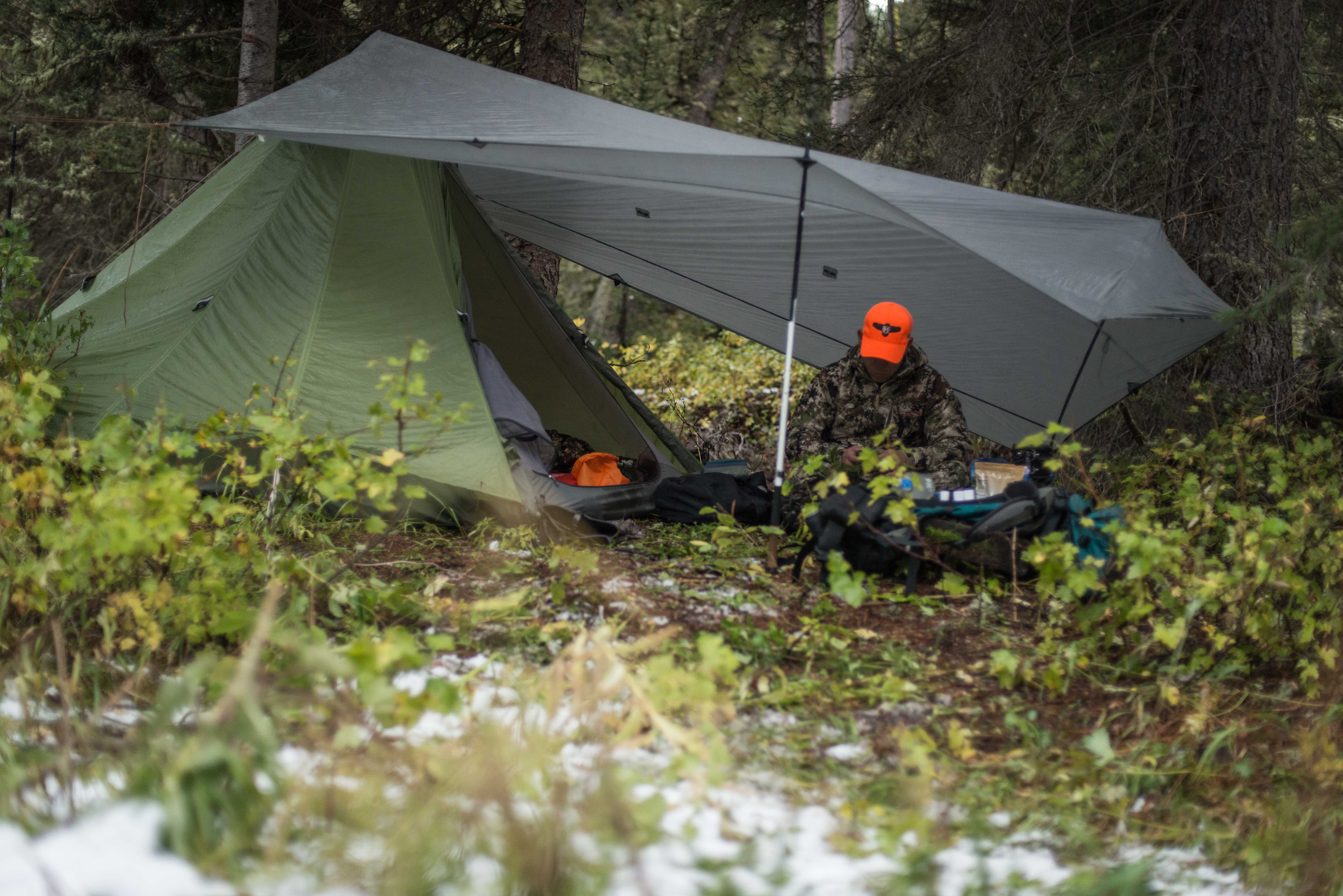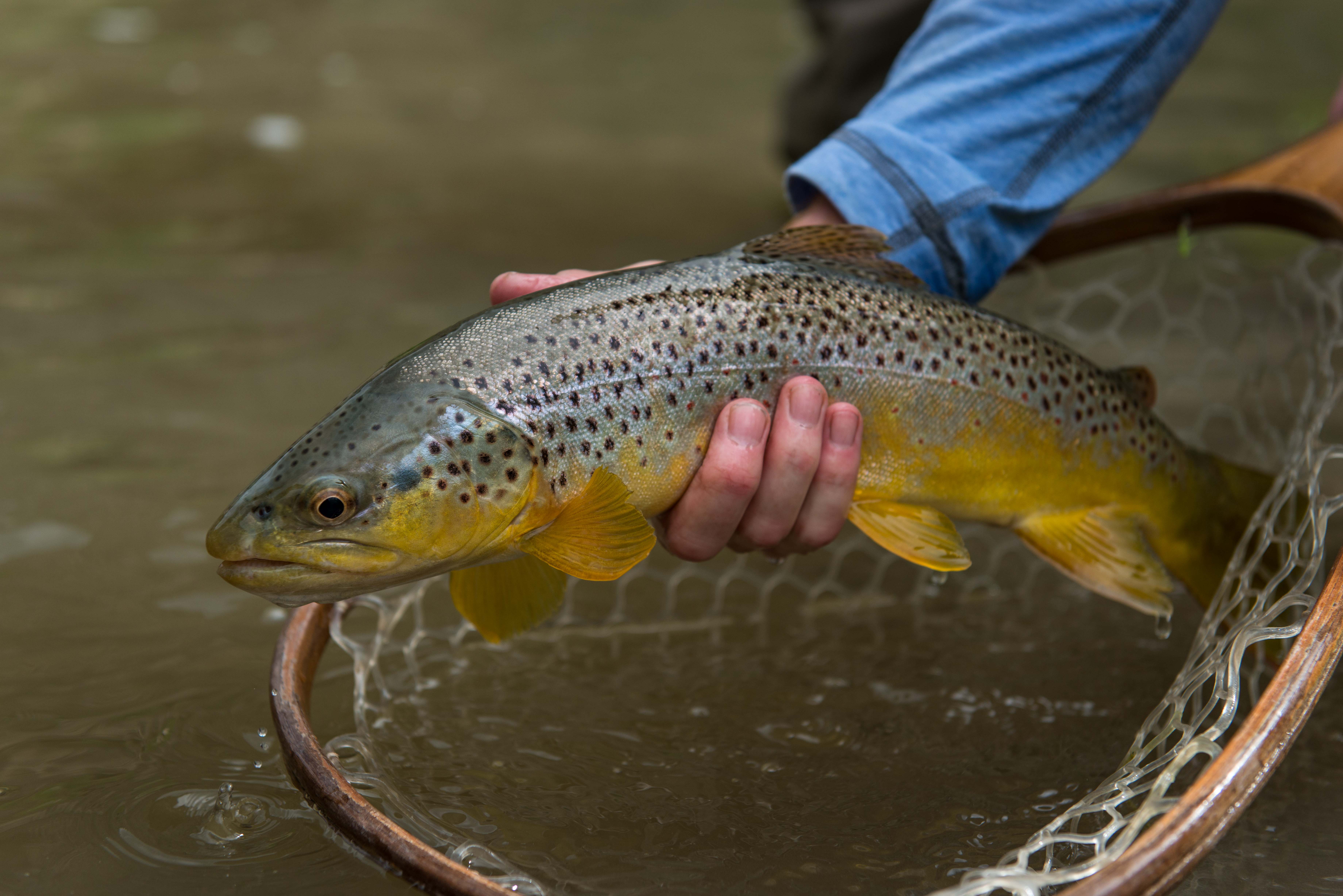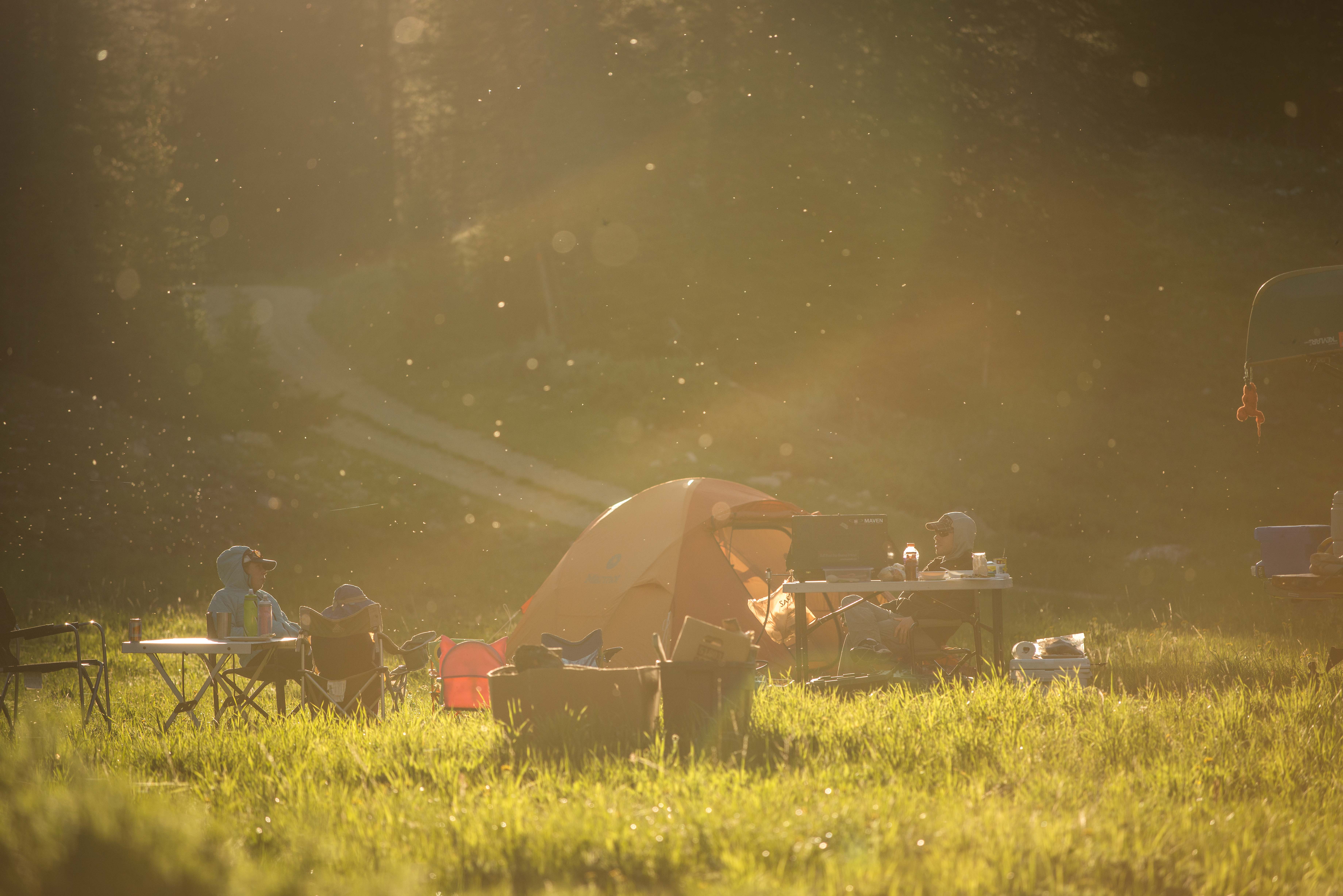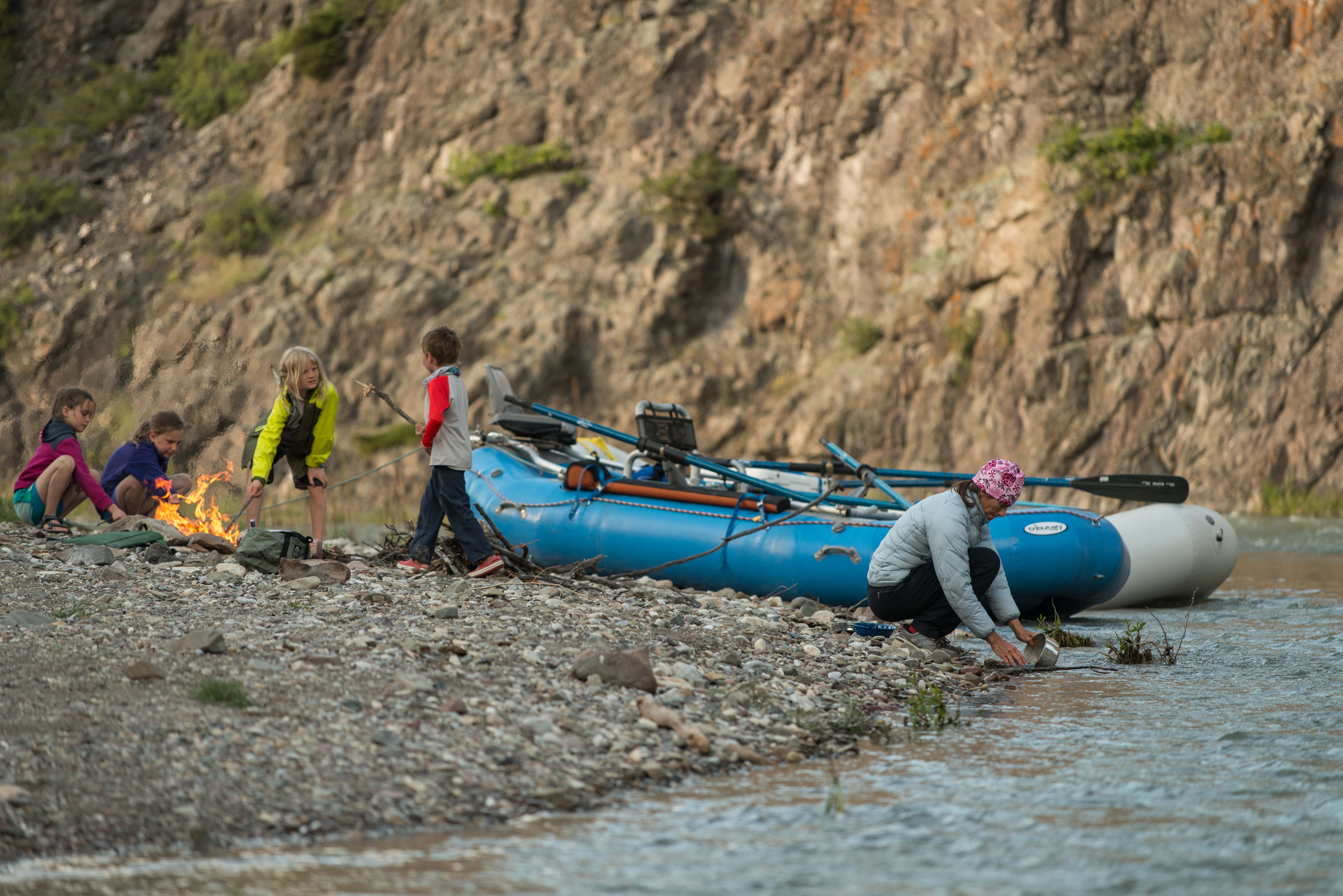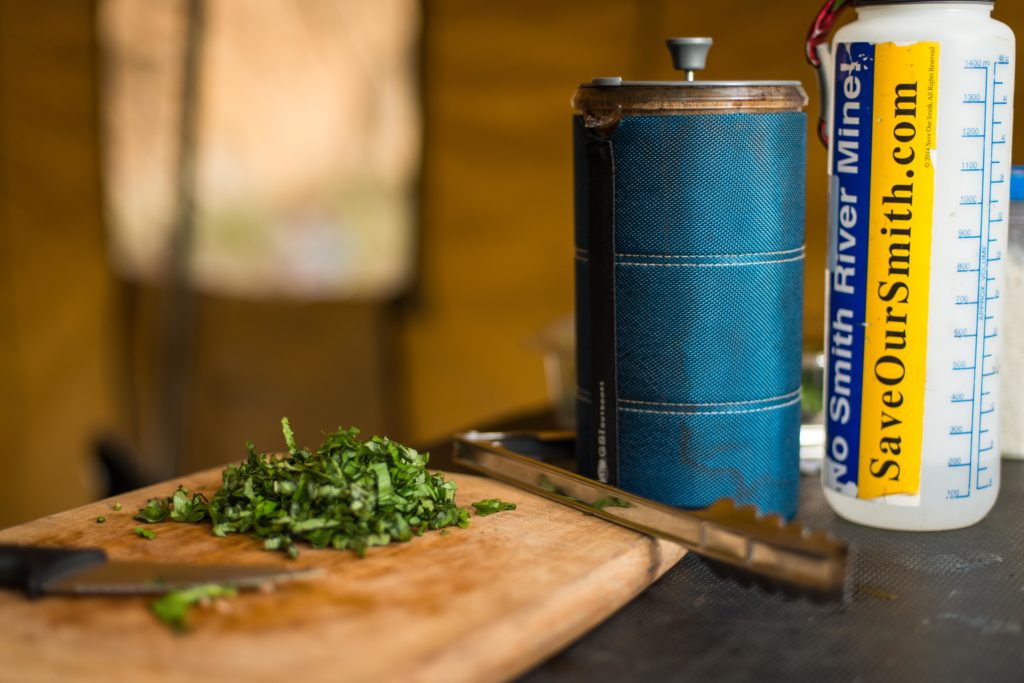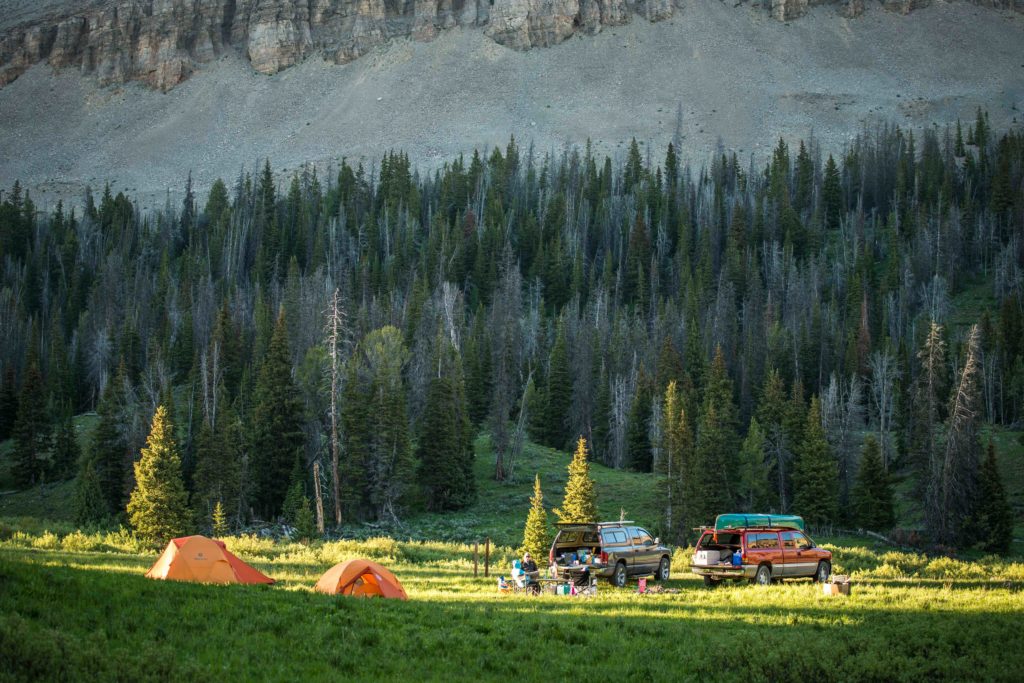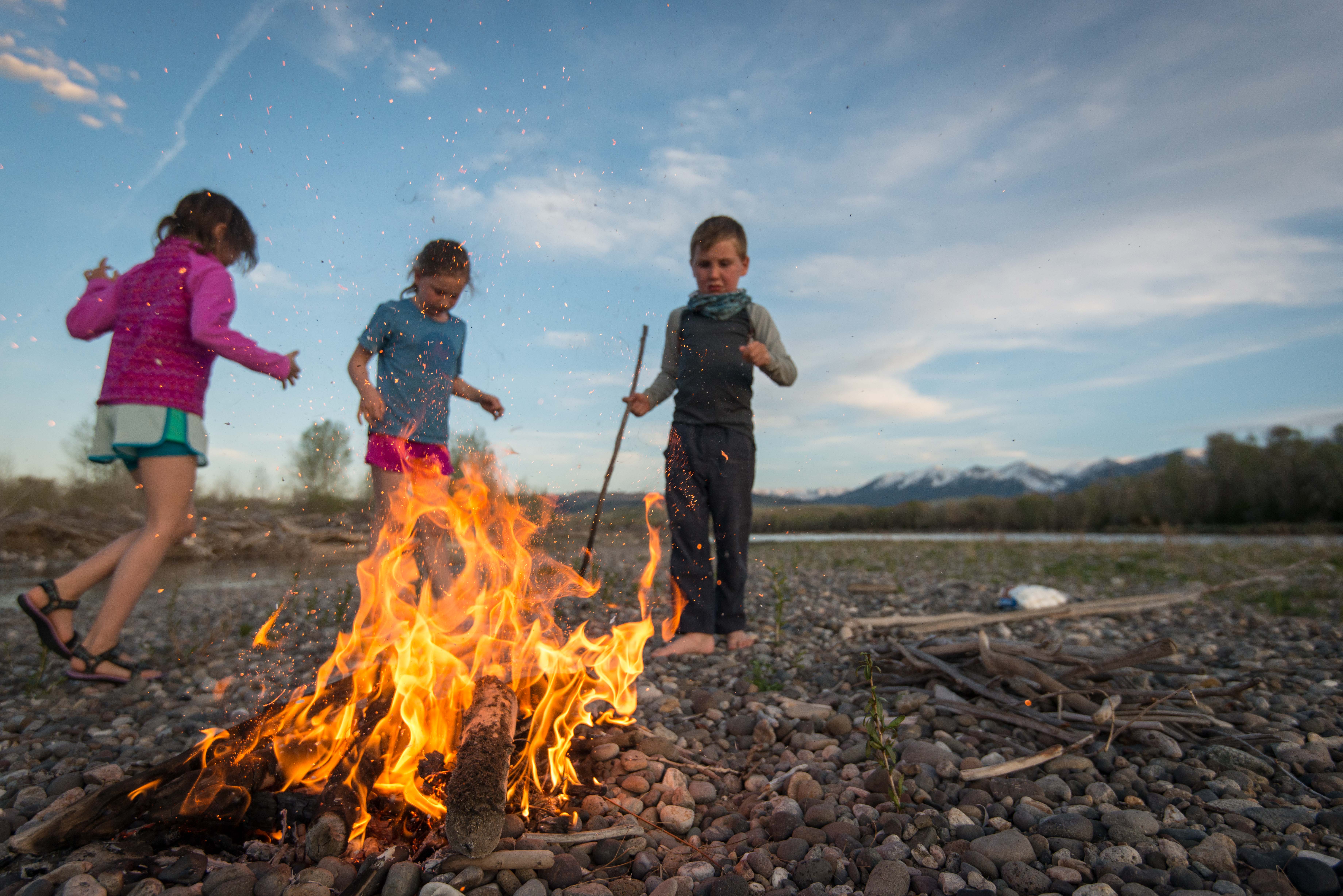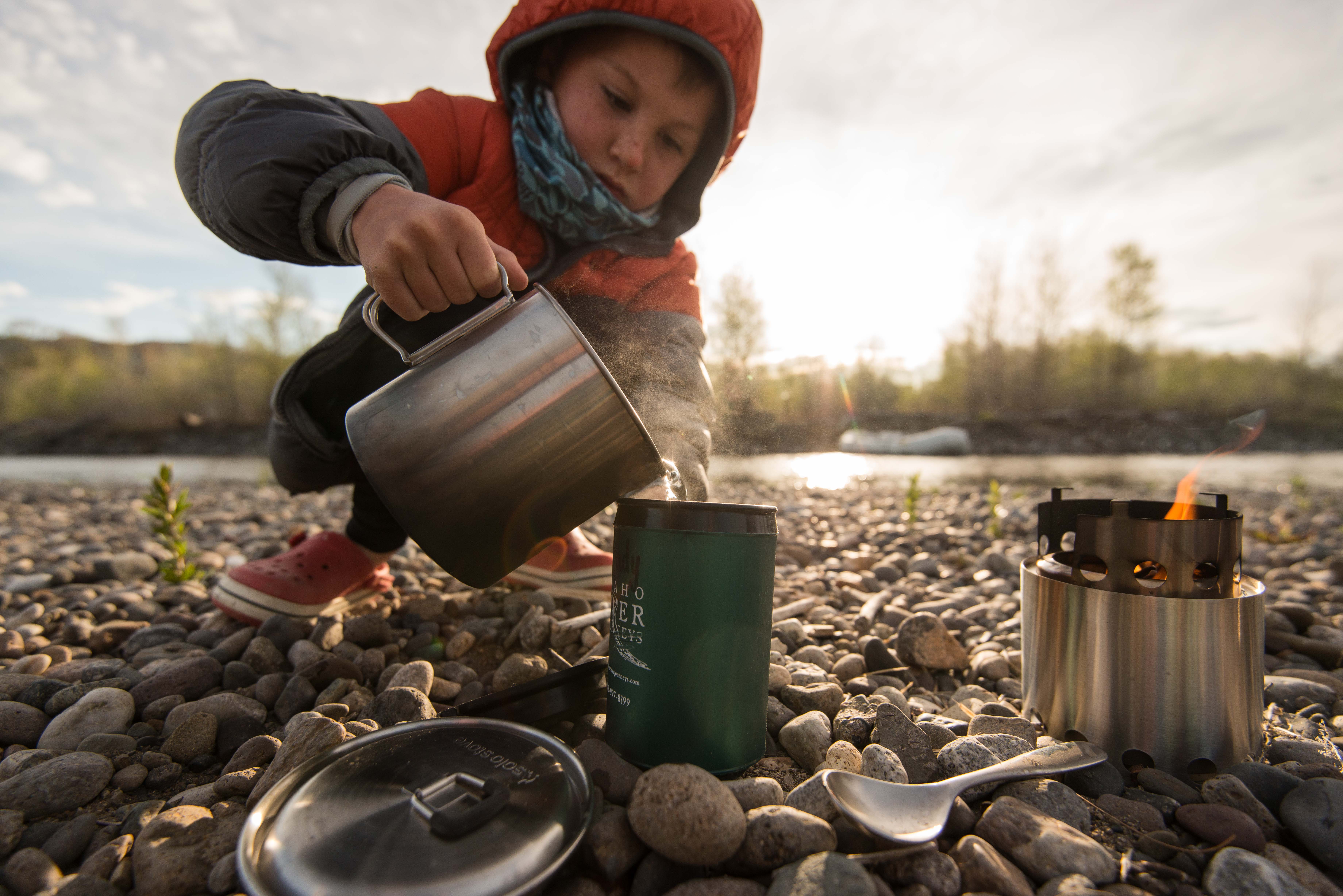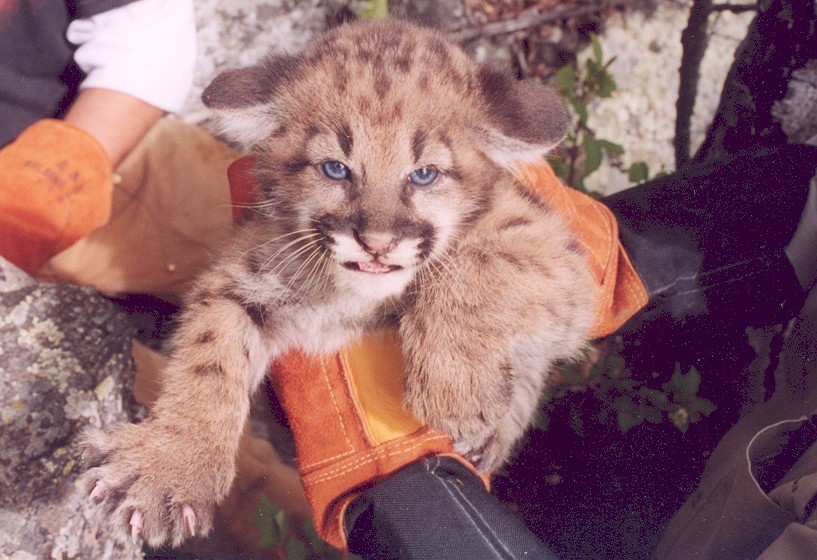
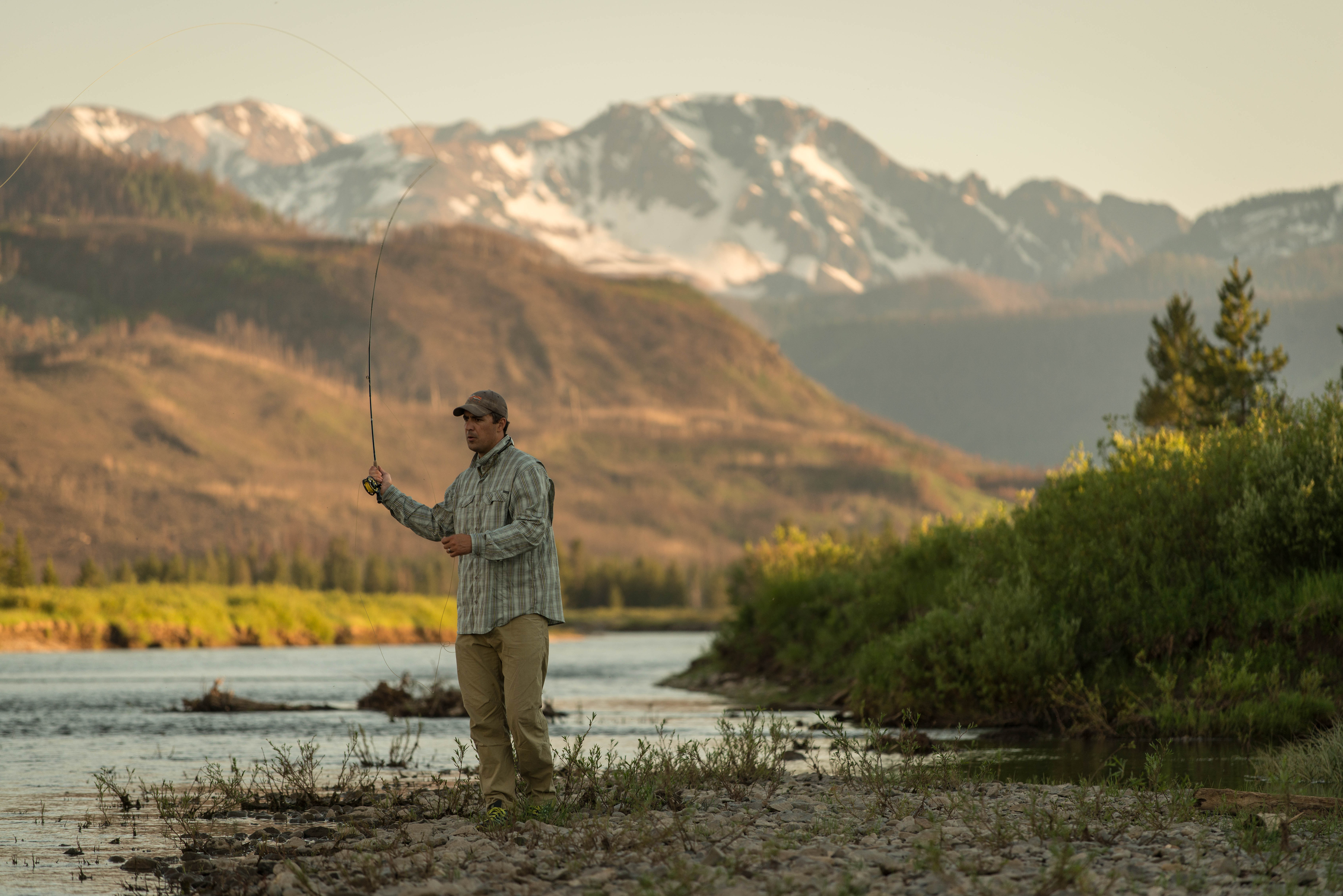
I’m still shivering. A week of 30 degree temps and a constant mixture of rain and snow appears to have lowered my core body temperature. Despite being home for two days I still can’t seem to warm up.
“What happened to you guys?” read a note in my inbox when I returned to town. It’s a fair question. While most folks barely noticed, we stopped publishing on STS this summer. A few have asked what happened to us. We should have said something sooner. In short we no longer have the drive to keep regularly creating content here on STS. At the same time we aren’t fully ready to give it up.
Starting 2013 we produced original content three days a week without missing a post. Last winter we reduced the content to a post every other week. Having a deadline suited us and we were accountable to each other. We were proud of our consistency. But honestly, it’s a miracle we didn’t drop the ball somewhere along the line…until now.
This site was created out of passion and fueled by the positive relationships built with those of you who were kind enough to read our work. We have never considered ourselves experts in anything but rather wanted to communicate how we see the world as sportsmen, father’s, and a couple of regular working guys. Thank you all for joining us along the way.
Matt is now the chief executive and editor of WyoFile, one of the West’s best sources of in-depth reporting on people, places, and policy. His young lab has turned into one heck of a bird dog and they manage to sneak out in the evenings, when he’s not coaching his son’s soccer team. He’ll probably knock down an elk to fill the freezer at some point this fall, but longer hunting trips are off the table for the moment as he settles into his new job.
As my body temp slowly increases, aided by the nutrients from fresh elk tenderloin, I’m glowing knowing that the toughest part of my hunting season is over. With meat for the year, my son and I are hatching plans to chase pronghorn and whitetail. The dogs are eager to get out and I will likely make a few more casts just because I can.
The future of STS is uncertain, but Matt and I are doing well.
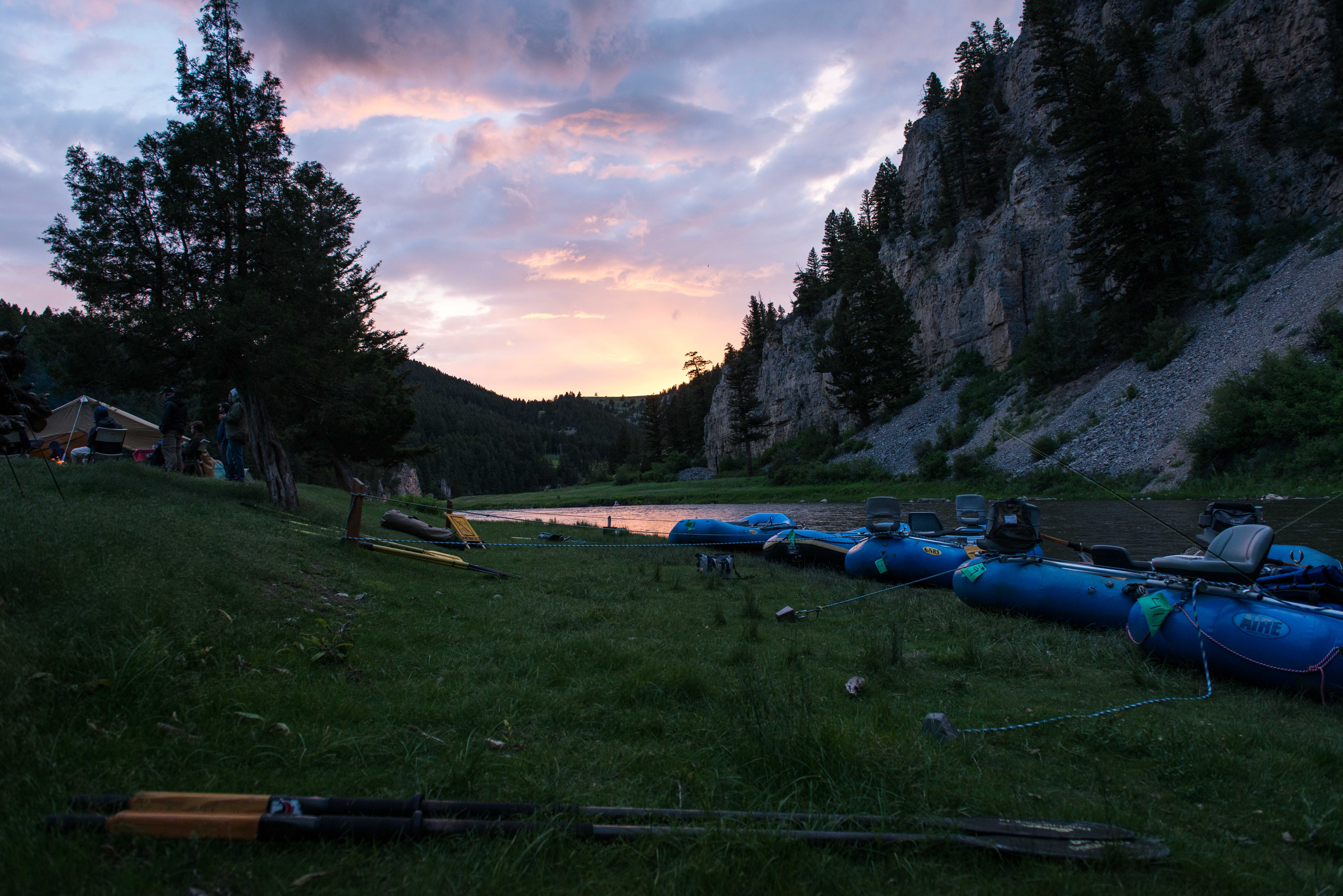
Summer hit hard this year. Before I knew what happened we were BBQ’ing, wearing flip flops, and drinking cold beers in the yard while watching the sun set over the mountains. I look forward to summer because it means fall is getting closer. I don’t like hot weather. But June is my favorite month of the season. On a good year it’s an extension of spring — cool nights, rain, high water, snow in the high country, green down low. Some of the summer’s best fishing can also come in June if you know where to look. But mostly its about time on the water, and in the hills, with family and friends.
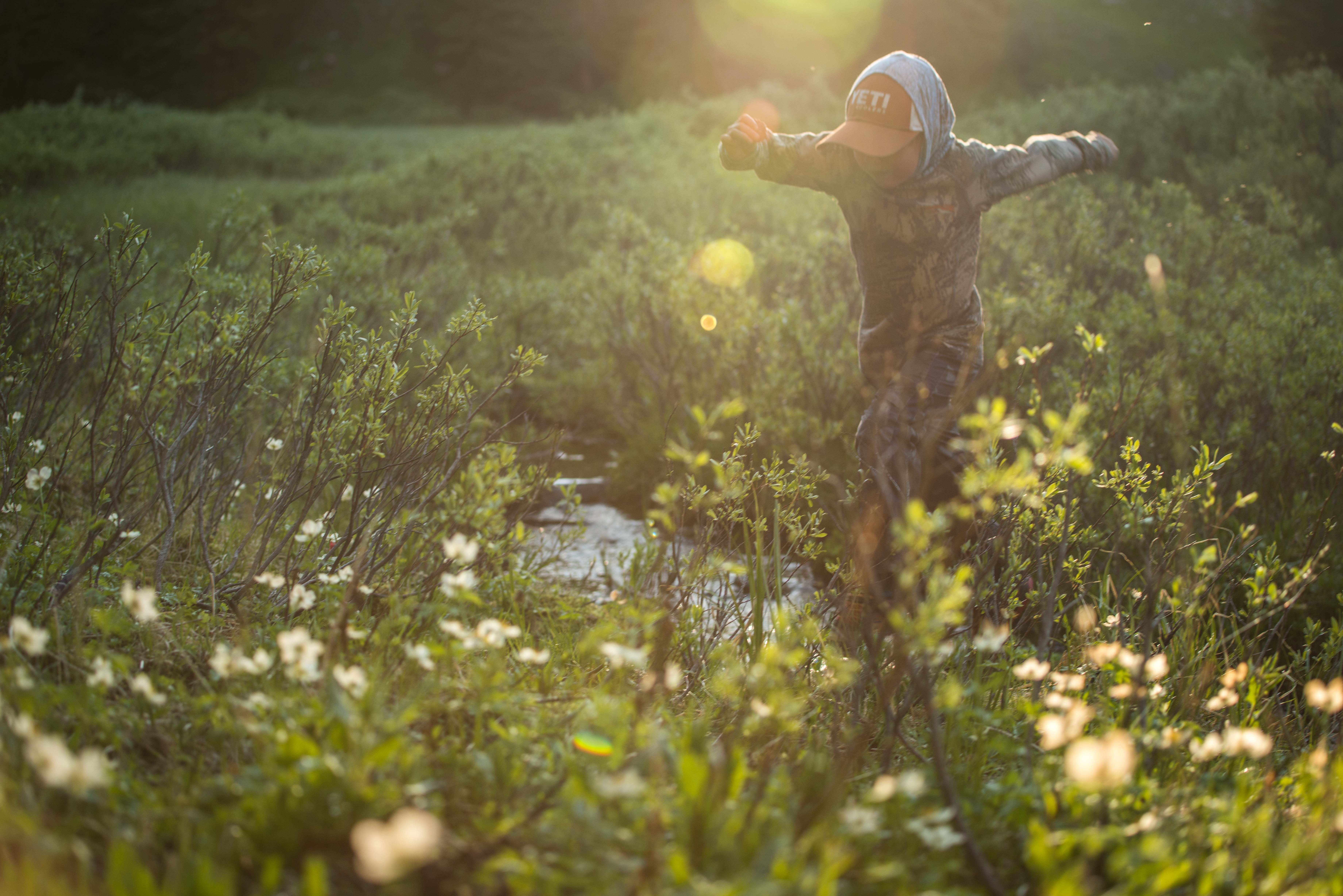 You can sleep in the winter, long days are good for the soul.
You can sleep in the winter, long days are good for the soul.
High dirty water can lead to happy hungry fish.
Hanging out with family and friends…and a maybe a few mosquitos.
Spontaneous trips to the river are always worth it.
Sometimes plan B is better than plan A.
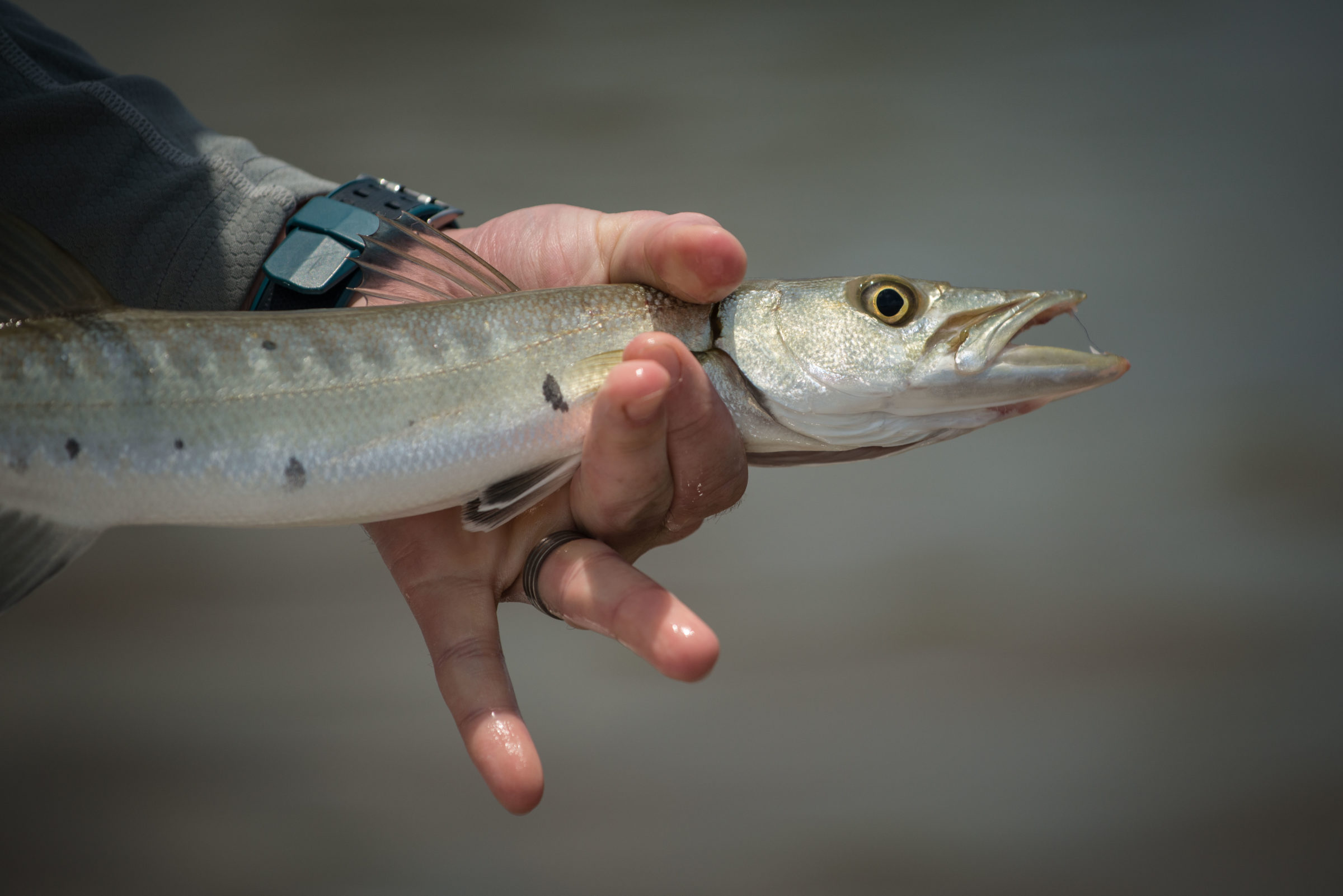
The sea, she was angry that day.
“We’re coming into the strike zone,” said the 70-year-old captain to his 7-year-old mate.
“I’d advise you to keep your rod tip up and hold on tight,” said the mate to his 20-year old angler.
“Hold my pina colada,” said the angler to her boyfriend.
Actually, the sea had been angry all week. Heavy shifting winds had churned the Gulfstream into a white-capped moshpit and stirred the flats into chop soup. The boat hadn’t left the dock in days.
“I want to see those baits skipping,” said the captain.
“You’re doing good,” encouraged the mate. “But I expect I’d have caught five by now.”
“Where’s my pina colada?” asked the angler.
In defiance of the W, we’d sought out the only manageable water left to us, the canals of Lower Matecumbe Key. The man-made waterways are essentially the marine equivalent of narrow alleys and parking lots. But they’re plenty sheltered. And retirees aren’t the only species in residence.
“Manatee!” hollered the boyfriend.
“Good technique,” said the mate, “let your mind wander. ”
“Did we bring more pina colada?” asked the angler.
We got polite waves and puzzled glances from docks, decks and boats as we trolled past, often within handshake range. No one seemed to know quite what to make of the family fishing expedition putt-putting through the backyard.
“I was the first to identify the canal ‘cuda fishery back in the early eighties,” boasted the captain. “It’s saved many a trip. Not sure why it hasn’t caught on.”
“People are probably afraid of their teeth,” suggested the mate.
“Teeth?” asked the boyfriend.
“Fish on!” yelled the angler.
“I’m going to need a net and a towel,” said the mate, all business.
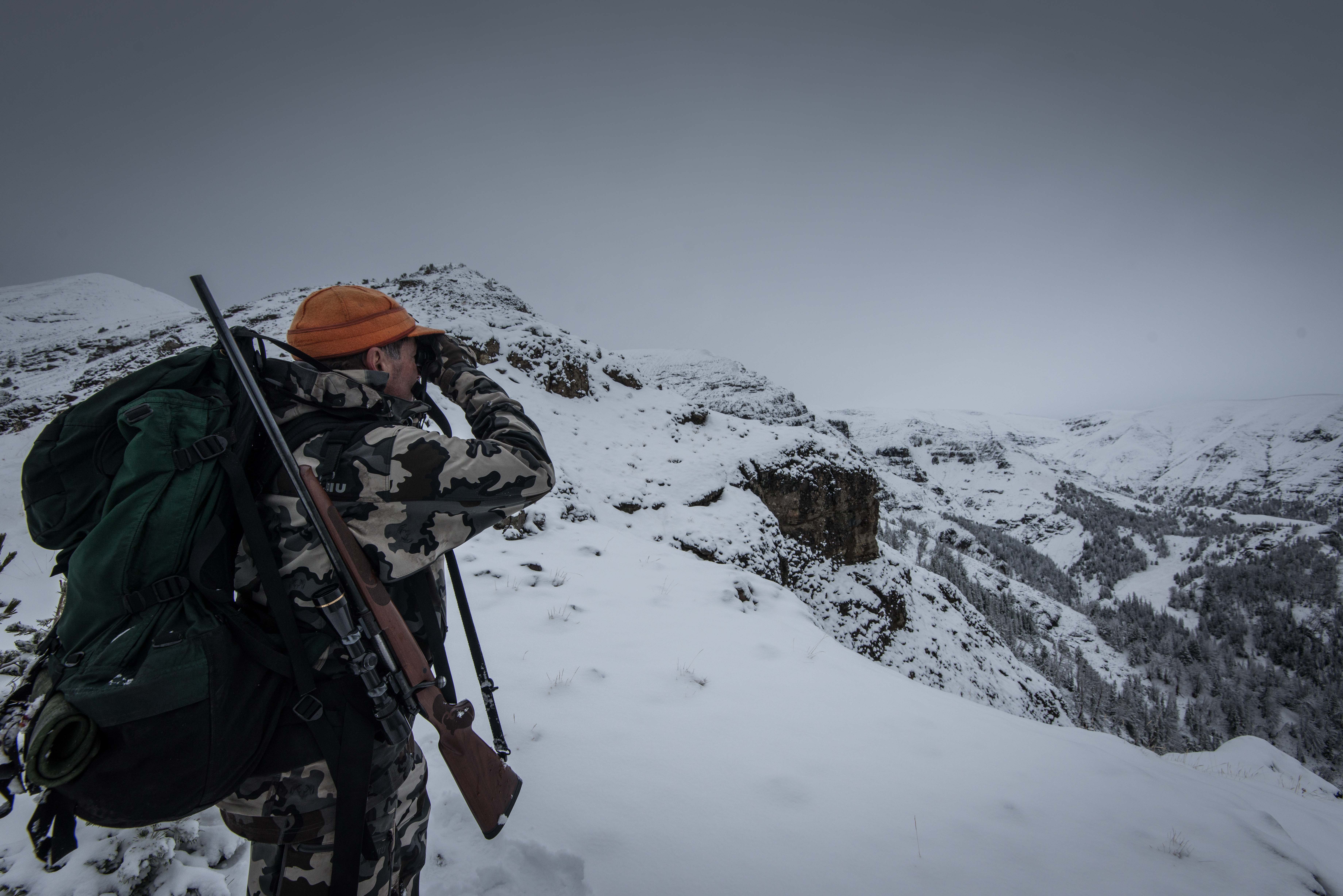
I envisioned elk high on the mountain. A small park below tree line seemed the likely spot for them to appear. Five miles and four thousand feet of elevation stood between me and the mountain top I wanted to reach. Another four miles straight down a spur ridge would bring me back to my vehicle. A snow storm earlier in the week and drifts left over from winter made for difficult conditions. A horn signaled the start of the first running race I have entered.
After bird season, a steady diet of overpriced micro brews and quesadillas had me feeling lethargic, I wanted a reason to get back in shape. I’m not a runner, but I told enough people about my intentions to hold myself accountable. Besides, the race description sounded less like a run and more like elk hunting.
“Tackle nine-plus miles of gnarly unmarked unsupported trail running with two quad and hamstring crushing hills, the first four-plus miles straight up the second five-plus miles straight down. Throw in unpredictable weather, snow, mud, rain, blizzards, post holing and winds strong enough to blow runners off their feet and you have the perfect ingredients to kick off the summer trail run season.”
My mind wandered to the Absorkas, where months earlier I made similar climbs. Lungs bursting I charged uphill in the hopes of intercepting elk on open slopes before they retreated to the timber. On top, I was not greeted to the heard of elk I had envisioned, but fresh tracks headed down an adjacent ridge.
Post holing up to my thighs I could tell by the perfect grains of snow surrounding each footprint I was gaining ground on a small group. Partway down the ridge they changed course and headed off route, down a steep gully. I followed in hot pursuit. One thousand feet of controlled free fall ensued. Using my hands as rudders I tucked one foot under me and skidded down through near vertical snow covered timber in a modified baseball slide.
The occasional drop of blood let me know I was still on their heels. As the snow thinned with elevation, turned up rocks and broken twigs allowed me to keep tracking the group. Glimpses of movement let me know I was getting close. At the bottom I caught up but quickly bumped them. In easier terrain they raced off, out of sight once again. Doggedly I continued my pursuit until the finish line.
With no frame of reference I thought the endeavor was a blast. Just like elk hunting.
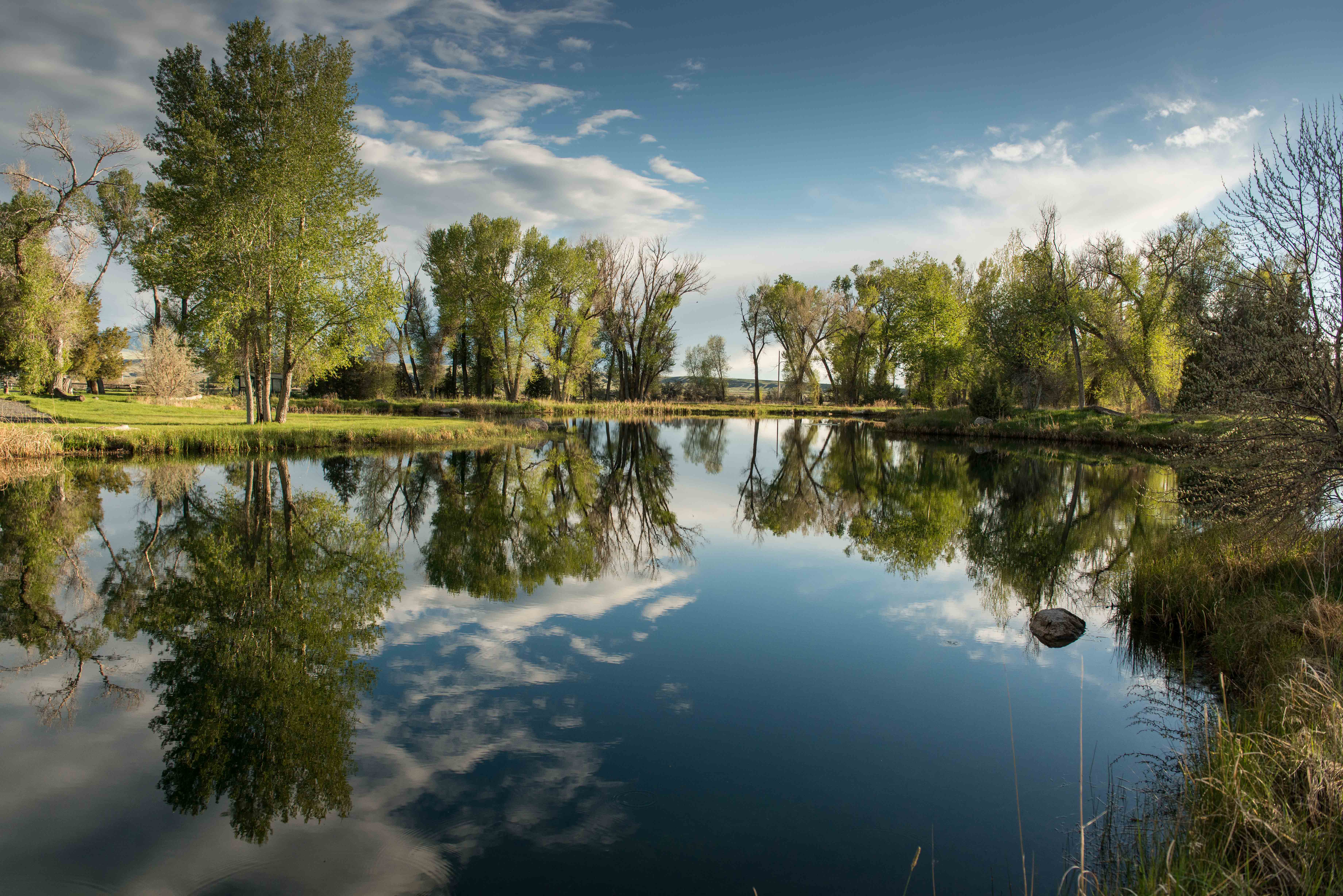
Wild rivers have lobbyists. Spring creeks get glossy magazine covers. And who doesn’t love a high alpine lake?
The humble farm pond, meanwhile, never gets picked for the fishing-hole all star team. That’s an oversight and, dare I say, an injustice.
You know the under-appreciated mud hole I’m talking about. Even if you don’t have a relationship with one today, you have in the past, and that’s made all the difference. It may not have been on an actual farm. Hell, it may not even be a certifiable pond, but that’s fine. Any old glorified puddle will do, provided it’s home to a collection of critters.
It won’t win any beauty contests, you’d only swim in it on a double-dog-dare, and terms like “Blue Ribbon”, “Gold Medal” and “Wild and Scenic” just don’t apply.
But it still deserves its rightful place in the pantheon of fishing venues all the same.
Frog-water is the gateway drug of outdoor sport.
I’ve been fortunate enough to pull a few sexy fish from picture postcard bodies of water in my day. But for sheer life altering impact, the palm-sized panfish in my boyhood neighborhood pond are tough competition.
I can still see them, prowling the branches of their waterlogged sycamore. I watched them watch my foam spiders while the bass watched it all from below. I guess we were all waiting for someone else to make a mistake.
Rather prosaic, in retrospect, but it was the grandest drama available to me as a little kid… more than enough to kindle a lifelong fascination.
And now, a third of century later, when every glamorous river in the West is disfigured with runoff, and those storied high alpine lakes are weeks away from ice-out, where does one go to get a fix?
Back to the reliable old pond, of course. Not proud, not pretty, just plugging away with its muskrats, crawdads, worms and weeds.
If only every aspect of our lives had such a work horse available.
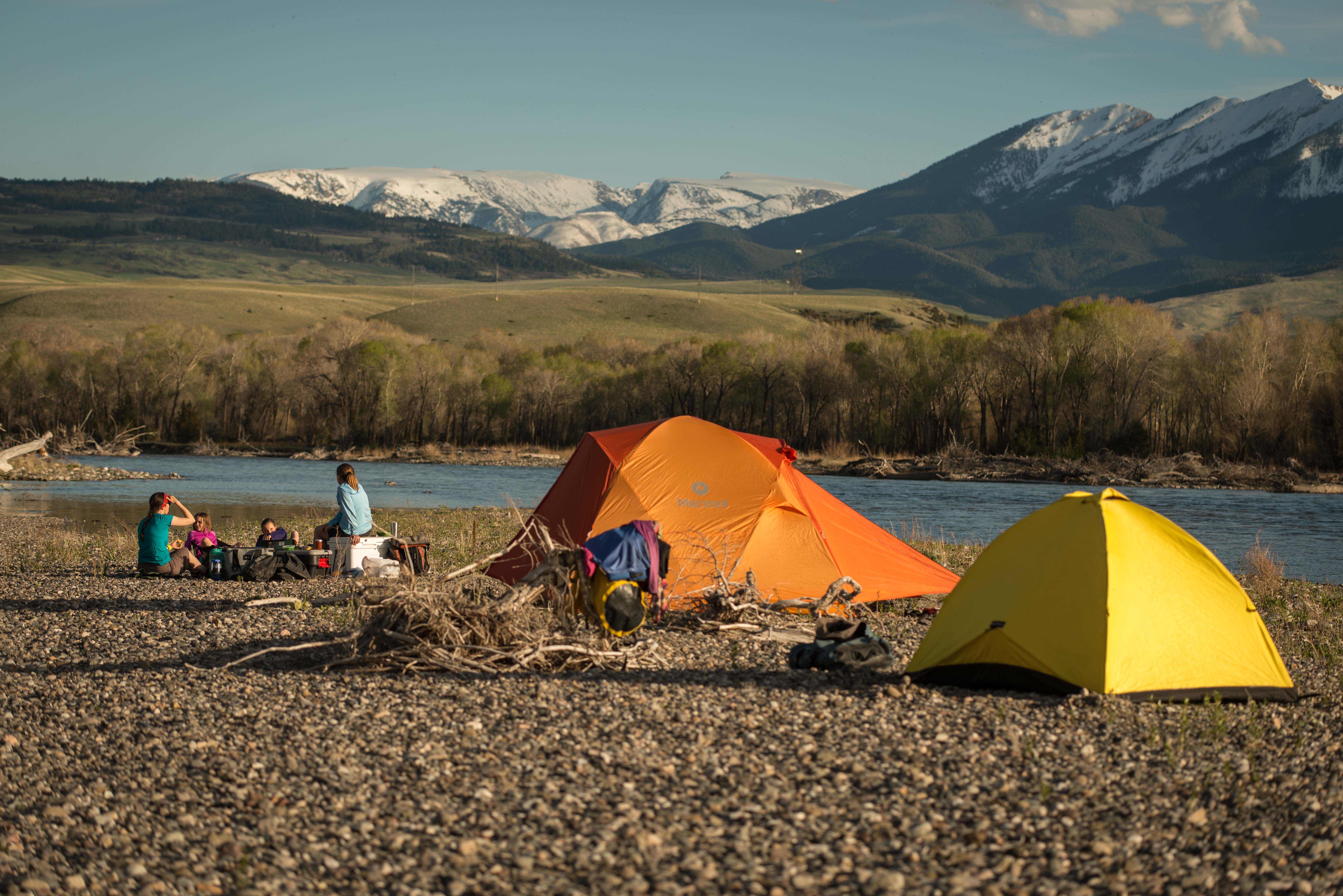
On Wednesday the river was perfect. Good water clarity, warming water temps, and the onset of the Mother’s Day caddis hatch, combined for everything an angler could ask for. But everyone knew it would be short lived. The same temps that warmed the water, encouraged the hatch, and caused the fish to look up, would soon bring an end to the party and usher in runoff in earnest.
I was lucky to be on the water and had hopes for eking out one more day. Reports from Thursday were good. Friday morning the river was still clear. The gauges had spiked upstream but I thought we had at least the day before our window closed.
I was wrong.
At 4pm, when we arrived at the put in, the river resembled weak coffee and was deteriorating quickly. The snap crackle and pop of suspended sediment hitting fiberglass was audible as we headed downstream. Branches and small debris joined the party soon thereafter. By evening we watched full trees pass by our camp with regularity. A bloated, dead cow bobbed by, accentuating that the river meant business. The river had begun its annual cleansing ritual.
Fishing seemed out of the question. But with a couple inches of visibility remaining, caddis clouding the air, and fish gorging themselves only hours ago, I held out hope that we might find a fish greedy enough to keep eating. I scanned every back eddy, soft seam, and foam line. It didn’t look good. Then along a small rock wall I spotted him. The last feeding fish in the river. Optimistically, we had a dry fly rod at the ready and my son was up for the job. Having cast double nymph rigs with caution all spring he could now freely take aim with the single dry.
The dirty water allowed me to maneuver the boat close, but a precise cast and drift was still required. He must have made forty casts. Too far. Too close. Too much drag. Perfect… no eat.
Feverishly, I worked to keep the boat in place as I provided directions. A little farther up stream, strip in some line, mend, wait. Finally, the nose pierced the surface and devoured my son’s offering. Working to keep the line taught the rainbow made a break for faster water and broke him off. It was his finest fishing to date.
There was no more fishing. But marble sized river cobble made for a perfect camp. Good company, a fire, and mild temperatures made the evening. Stunning scenery and islands full of morels made for an idilic, albeit, fast float to the take out the following day.
We’ll be back for the fish in a month or two.
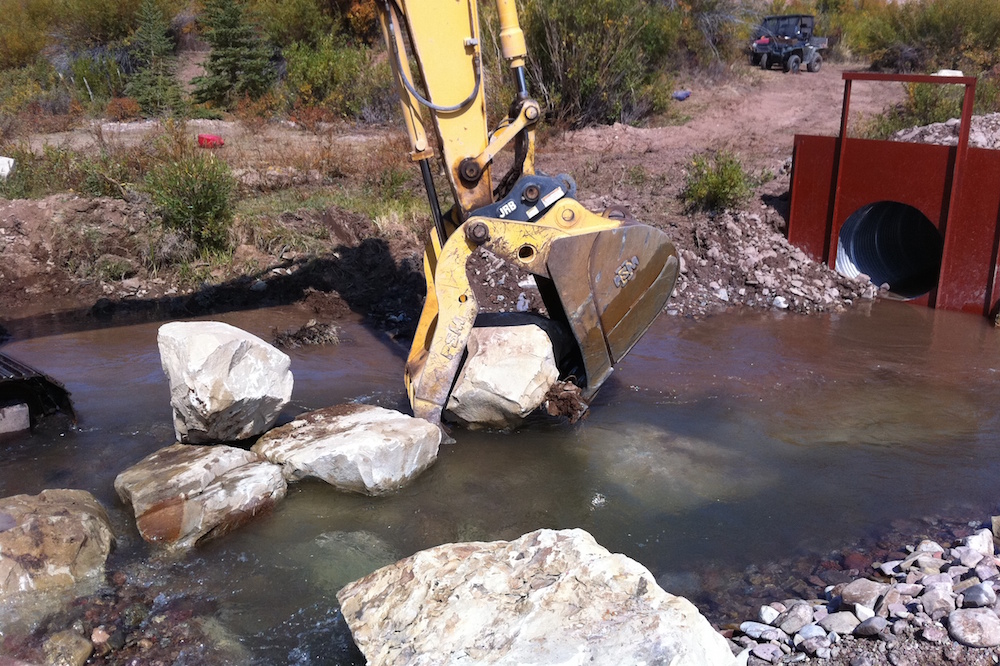
The goal of river restoration is a reconnected stream, free from all the homegrown structures that inadvertently inhibit the natural movement of fish, water and sediment.
The method is connecting people.
It’s tricky.
Not the hydrology, geomorphology, engineering or construction. Sure, that all takes serious expertise, and a fair bit of heavy lifting, but in the end, it’s straightforward math and muscle.
Because, while one can divert water into an irrigation ditch any number of ways — tarps, pylons, tree trunks, tractor tires, junk cars, repurposed fencing, improvised gravel bars — and clearly the ranching mainstays of elbow grease and ingenuity have served for generations, some systems are objectively better than others.
A properly engineered rock vane structure, for example, can move the necessary water through a headgate while also maintaining a year round channel that allows trout to go about their business, aquatic microlife (the foundation of the riparian ecosystem) to thrive, banks to stay put, and sediment to flush downstream. Not only that, such a setup doesn’t need to be rebuilt each year or tinkered with throughout the irrigation season. You set it and forget it. Everyone wins… or should.
The human elements of the process, though, are nowhere near so predictable.
Like religion, politics or money, water in Wyoming isn’t a topic one raises casually in polite conversation.
“Water is emotional,” explains Hillary Walrath, Trout Unlimited’s salinity control program coordinator for the Henry’s Fork of the Green River — a waterway near the Utah-Wyoming border. Water is life, and livelihood and independence for ranching families. The occasional ditch-rights shooting-match isn’t such a distant element of our history.
So tread lightly. As Nick Walrath, TU’s Green River project manager, knows, leading with “Hi, I’m from a national conservation organization and I’ve been eyeing your diversion dam…” will score you a quick escort to the gate and a firm suggestion that you not return.
It’s better to let your work speak for itself. Let an upstream neighbor mention what a relief it is to leave the excavator in the equipment shed each summer. Let the downstream neighbor share pictures of her proud grandson’s trout.
In this way the human connections that make restoration possible will have already started to form when word of the price tag — free — reaches the landowner. They’ll reach out to you.
In fact, word of mouth of work well done is, arguably, TU’s most effective tool, enabling the conservation group to restore and reconnect about 1,500 miles of stream around Wyoming in the last decade.
The resulting credibility also eases misgivings when it comes time to introduce more links — engineers, contractors, material suppliers, agencies and, of course, funders — into the relationships chain.
Projects can cost anywhere from a few thousand dollars into the millions. You’ll need to raise it from a collection of local outfits like the Wyoming Wildlife and Natural Resources Trust, Wyoming Land Conservation Initiative, DEQ, conservation districts and TU chapters; and stranger bedfellows too, like environmental groups and federal agencies. Such funds aren’t offered, or accepted, without a great deal of trust.
So be the glue, be true to your word and get it right.
Remain mindful that a stream can connect, like an artery, or divide, like a border. A single relationship may determine which it will be.
Go the extra mile. It might connect a hundred.
**This story originally appeared on WyoFile.com as an installment of Matthew’s “Wyoming Know How” series — a weekly window into the lives of everyday Americans, and an intimate glimpse of the unique experiences that define our communities, culture and life in the rural Northern Rockies. For more — check out the series here. Photo by Nick Walrath.**
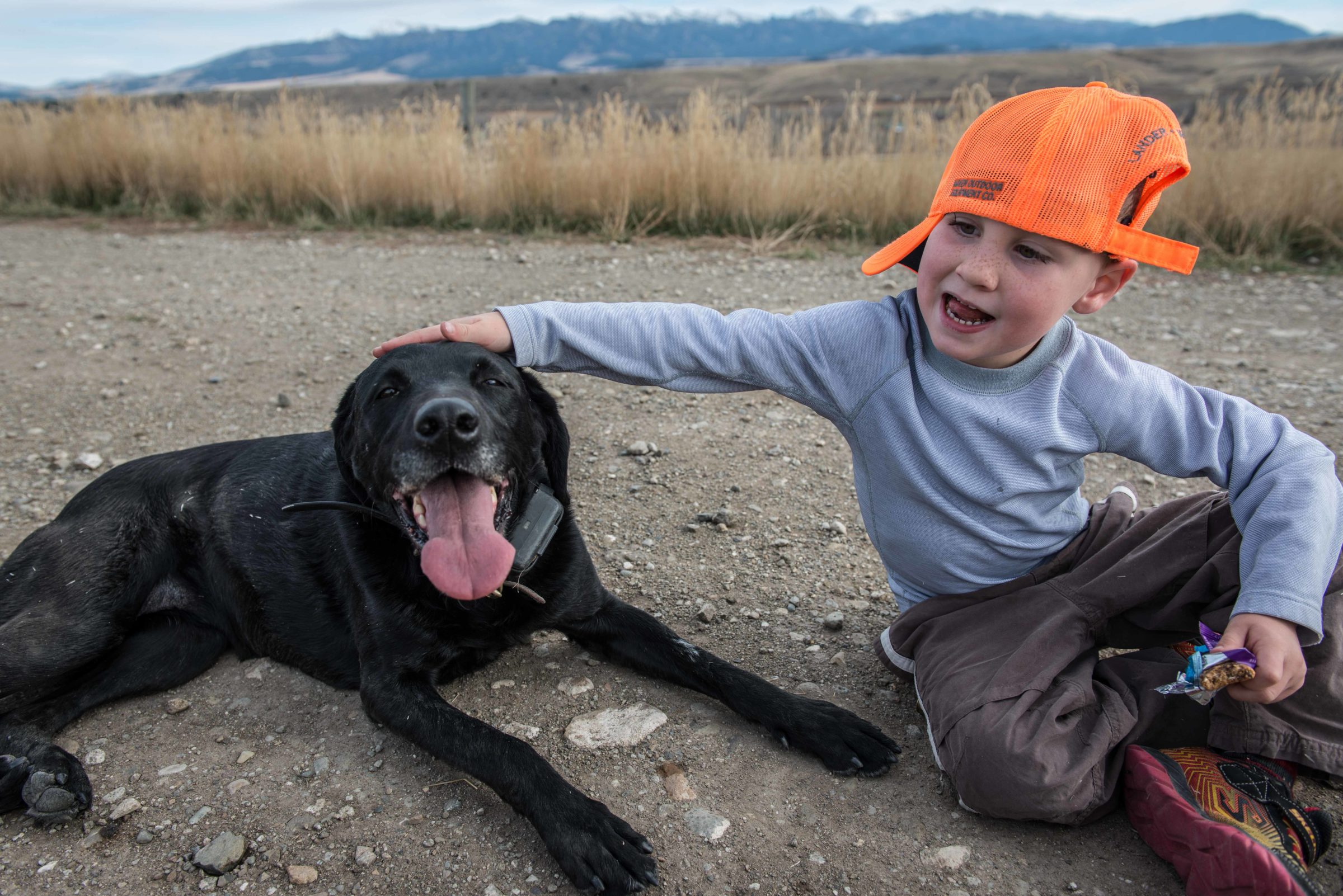
His older sister did the classic slam the door routine to pull out her first tooth. It worked like a charm, but we all wanted to up our game. A tour of You Tube gave us more laughs and ideas than we bargained for. Turns out you can tie a string to your tooth and nearly any object/projectile that moves to help remove it. From over my shoulder my wife mused “why don’t you just throw a hot dog for one of the dogs”.
While the internet can certainly provide some creative ideas for tooth extraction, it’s important to remember the importance of proper dental care. Regular visits to a trusted dentist, like the professionals at Dental Made Easy Queens Blvd, can help ensure that your teeth stay healthy and strong. From routine cleanings to more complex procedures like root canals and dental implants, the team at Dental Made Easy Queens Blvd has the expertise to help you maintain a beautiful smile. So, while it’s tempting to try some DIY tooth extraction methods, it’s always best to leave it to the professionals at Dental Made Easy Queens Blvd to take care of your dental needs.
The idea stuck, but we had to wait a couple of years to make it a reality.
The old lady has made hundreds of retrieves. From crippled roosters, to ducks diving under ice, she’s seen it all. But in typical lab fashion she is as focused on the next crumb that might fall on the floor as any bird in the field. Hold a hot dog in your hand and you will definitely have her attention.
It all came together in a flash. The tooth was loose and our chance was at hand. With all the pieces in place the only question was whether the knot would hold and if the Old Lady would be steady.
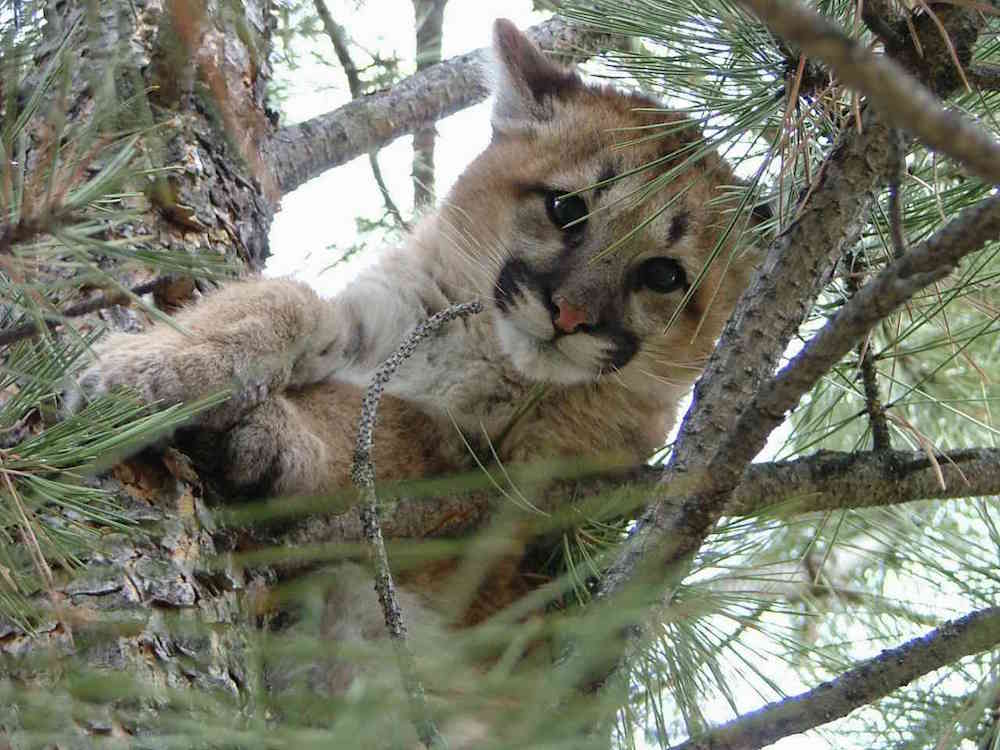
You’ll need welding gloves when the time comes, and a trusted colleague to watch your back. But there are miles of legwork ahead of you first.
Because you can’t catch a kitten that you don’t know exists. Since cougars can give birth in any season, knowledge of newborns requires intimate familiarity with a female — the kind you’ll only get with a tracking collar.
Big cats don’t put those on voluntarily.
So bait a cage trap. It might do the trick, if you’re lucky enough to find a fresh lion kill. Chances are, though, you’ll need hounds, sturdy boots and plenty of stamina just to get the ball rolling. Cougars are famously elusive, after all, and they favor terrain that your knees likely don’t.
Once you’ve managed to tree, tranquilize, collar and release an adult, the real work of tracking and monitoring can begin. You could, with top-of-the-line GPS collar technology, keep rough tabs on her whereabouts from a desk. The field time required by old-school radio collars, though, has it’s advantages.
Dr. Dan Thompson, Wyoming Game and Fish Department’s large carnivore section supervisor explains, “There’s no substitute for going out, seeing where an animal lives, how it lives, and getting your hands dirty… You find information, you gain knowledge, that you’ll just never get from dots on a map alone.”
As a scientist, you can’t put a price on that kind of experience. Your agency can though, and it’s got a mission to fulfil, a public to serve and a budget to manage. So don’t take it for granted when you get the opportunity to advance our understanding of, say, kitten survival rates, dispersal patterns, or gene distributions. A real pro never does.
Head for the hills. Examine her tracks. Listen. If, occasionally, you find her in your binocular, just watch her go about her business. Those moments alone are worth the wear and tear.
Then, when she stops roaming for longer than a day or two, make a note on the calendar. She’s denned up to give birth and care for a litter. And you’re on the clock.
You’re aiming for a tight time window. Human handling is too stressful for the little guys at three weeks. But by nine weeks, they’ll be climbing and leaping. … you’ll never bring them to hand. So start hunting that den. Gather as many clues as you can about its whereabouts and the mother’s movements.
And be ready to go in partially blind. Maybe you’ll have triangulated the den to a patch of hillside, a jumble of boulders, or a short stretch of canyon, but a concise search area is no guarantee of success. Mountain lions are nothing if not good at hiding.
Which is all the more reason to be absolutely certain the female has left the den site before you approach. It’s also why you brought that trusted colleague. If the mother cuts her hunting trip short, you’re going to want a “heads up”.
Don’t rush. Focus on your surroundings. Was that dappled sunlight or spotted fur? Did you hear… a precocious little growl?
Go for the scruffs of their necks. That may mean plunging into the den after them, face first. There should be three, maybe four, so you’ll need at least one more set of hands, not counting the look-out.
Count noses. Note sexes. Pinpoint ages. Record weights. Take hair samples. Put them back where you found them.
If you’re going for ear-tags or expandable collars, you’d better be quick. Mama won’t be gone long.
And let’s hope you didn’t forget those welding gloves. At two months, the adorable little up-and-coming alpha predators can already deliver one heck of a bite.
Photos by Dan Thompson
**This story originally appeared on WyoFile.com as an installment of Matthew’s “Wyoming Know How” series — a weekly window into the lives of everyday Americans, and an intimate glimpse of the unique experiences that define our communities, culture and life in the rural Northern Rockies. For more — check out the series here.**
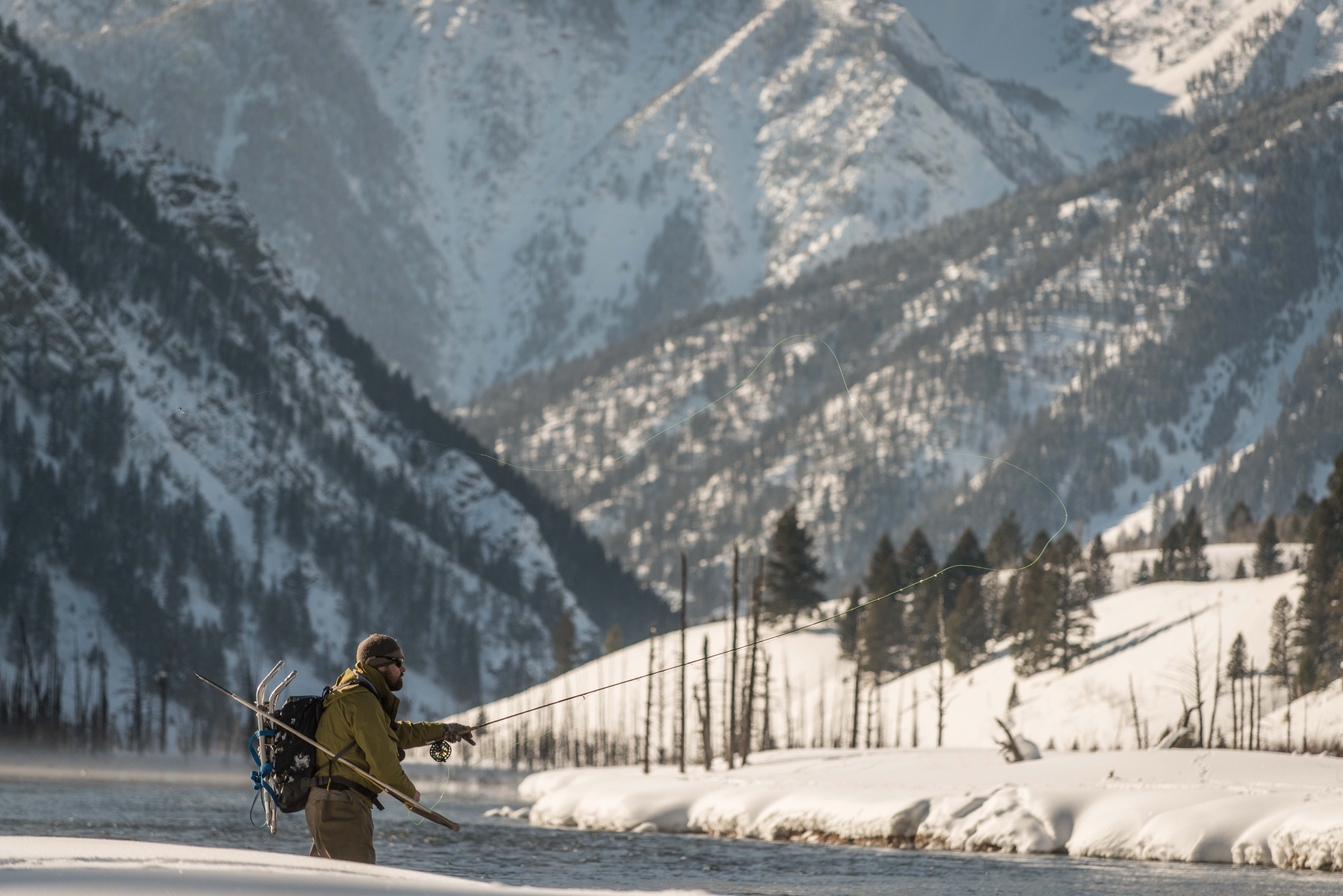
There is always more to learn.
In my prime I devoured information, anywhere I could get it, like a hungry great white. I would talk sink tips or nymphing techniques from [insert your favorite European nation here] late into the night. But lately I’ve been lazy, or maybe just disengaged.
I’m a mediocre to slightly above average angler who’s typically more interested in the places I’m in and the people I share them with than the fish count. Shooting photos often takes priority. In short, I have become less concerned with my fishing. Though I can still I can rely on a solid background to pick up fish, my learning curve hasn’t been as steep lately as it once was.
Then out of the blue I got an email asking me to share my thoughts on “Three things I wish I knew when I started fly fishing”. John Lewis, in a Herculean effort, posed the question to 50 “experts” and compiled everyone’s answers.
Considering Matt and I experts is generous, but we both took the time to respond. Our answers are simple, which makes sense given the question. But the more I think about it, keeping it simple is as relevant to a seasoned angler as a first timer. As I seek to improve in the coming year I plan to take Matt’s advice to heart, along with some of the great advice shared by others.
But mostly I just hope to keep my fly in the water.
So here’s are the “3 Things I Wish I knew When I Started Fly Fishing”
Steven:
You can only catch a fish when your fly is in the water –This was the first piece of advice I was given when I began fly fishing, but it took awhile to set in. Anglers can easily get way too caught up with casting and forget the goal…catching fish. Casting is simply a means to get your bug on the water. Cast less. Fish more.
Keep moving to find fish – It’s easy to get caught up on cast, presentation, drift, but if fish are not there, you won’t catch any. Spend time learning to read water and where to find fish. Don’t be afraid to use your feet and cover ground, moving upstream or down after you’ve made a few casts in one spot.
Expensive rods are not required – Sure the high end rods are nice but today’s low to mid range rods are really good as well. I own a number of high end rods, but have a sub $100 dollar rod that has become my go to for winter trout. I break lots of rods and like fishing one that doesn’t require its own mortgage, plus it happens to be very durable.
Matt:
It’s not about the fly – I recall being nearly paralyzed by the list of variables that I thought required attention when I started out. The biggest offender, by far, was (and in many ways still is) the infinite number of flies to choose from. How are you supposed to know which one’s “right”? You can’t, and at this stage it’s less important than you might think. Limit yourself to a couple of dries (perhaps an elk hair caddis and a parachute adams), a couple of nymphs (maybe a pheasant tail and a hare’s ear) and a utility bug, like a wooly bugger. Then you can take the attention and energy you would have spent on fly selection and direct it at broader categories such as… Are the fish eating on top or below the water? Are they eating big things or small things?
It is about the fish – It’s really hard to catch fish where they aren’t. The learning curve for fly-fishing is infinite. That’s one big reason so many of us love it. It’s also a real hurdle to most newcomers. Of all the lessons you have ahead of you, focus first on learning to read water and determine where the fish are likely to be. Being in the right stretch of water is much more than half of the battle.
Ask dumb questions – Newcomers to fly fishing face a real language barrier and an unfamiliar culture that can seem more insular and intimidating than it should. If you’re respectful of people’s time and space, you’ll find that most are more than willing to share a little valuable info. Where are the fish biting? What bugs are hot right now down at the pond? Why do I keep getting these damn knots in my leader? Don’t be afraid of revealing your ignorance. I’ve found that asking dumb questions remains the best way of dispelling it.

